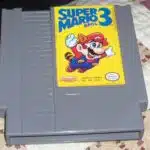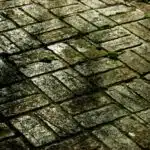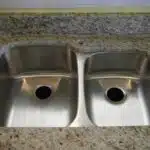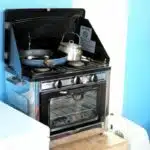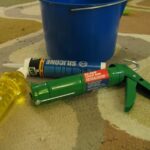Melted plastic is a common household problem that can happen due to various reasons. Whether it’s an accidental spill on a hot surface or a plastic item that got too close to heat, removing the melted plastic from surfaces can be challenging. However, it’s essential to remove it as soon as possible before it damages the surface permanently. In this article, we will discuss how to remove melted plastic from five different surfaces using simple yet effective methods.
Removing melted plastic requires patience and the right approach. It can be frustrating and time-consuming if not dealt with properly. However, with the right technique and tools, you can effectively remove melted plastic from surfaces such as carpets, clothes, wood, metal, and glass without damaging them further. By following these tips and tricks mentioned in this article, you can save yourself from spending on expensive repairs or replacements of damaged surfaces caused by melted plastic spills. So let’s explore the ways to tackle this issue step-by-step for each surface type.
Understanding The Risks Of Melted Plastic On Surfaces
At times, accidents happen and plastic melts on surfaces. While this may seem like a minor inconvenience, it can lead to serious risks if not addressed properly. A risk assessment is necessary to determine the extent of the damage caused by the melted plastic. This involves examining the type of surface affected and the amount of plastic that melted.
It is essential to understand that certain surfaces are more vulnerable to damage than others. For example, plastic melting on a wooden surface can cause irreparable damage, while it may only leave a stain on a metal surface. Additionally, melted plastic can release harmful fumes into the air, which can cause respiratory problems for people in the vicinity.
To prevent such risks from occurring, it is important to take appropriate prevention techniques such as ensuring that flammable materials are kept away from heat sources. It is also crucial to use proper equipment when handling hot plastics and adhere to safety guidelines provided by manufacturers. By taking these measures, you can avoid accidents that lead to melted plastics on surfaces and keep yourself and those around you safe.
Having understood the risks associated with melted plastic on surfaces and prevention techniques, it’s time to prepare your tools and materials for removing it off surfaces effectively.
Preparing Your Tools And Materials
- Prior to beginning any project, it is important to gather the necessary tools and materials.
- This includes items such as protective gear, cleaning supplies, and the item/s that need to be worked on.
- Prep work is also key to successful completion of the project, such as pre-treating any surfaces that may need it and brushing off any loose debris.
- Finally, having a plan of action and a designated area to work in are important considerations when preparing tools and materials.
Tools
As a home maintenance enthusiast, it is important to prepare your tools and materials before tackling any task. Tool organization can save you time and effort during the project while tool maintenance ensures that your tools are in good working condition. Proper preparation of tools increases their longevity and enhances the efficiency of your work.
To organize your tools, sort them according to their function and store them in designated areas. This makes it easier for you to locate specific tools when needed, reducing the likelihood of misplacing them. Additionally, labeling drawers and cabinets can further aid in organizing your workspace. Maintaining a clean work environment also helps prevent damage to your equipment by avoiding the accumulation of debris.
Proper tool maintenance involves regular cleaning, sharpening dull blades, and lubricating moving parts. A well-maintained tool not only performs better but also reduces the chances of accidents resulting from malfunctioning equipment. Regularly inspecting and repairing damaged tools is also crucial as it prevents further damage to both the tool and yourself during use. In essence, taking care of your tools saves you money on repairs or replacements while ensuring successful completion of tasks at hand.
Materials
When it comes to home maintenance, preparing your tools is only half the battle. The other half involves preparing suitable materials for the task at hand. Safety precautions should always be taken into consideration when selecting materials, as some may pose a risk to both you and your equipment. For example, using inappropriate abrasive materials on delicate surfaces can cause damage or scratches that are difficult to repair.
Suitable materials should also be chosen based on their intended use. For instance, if you plan on painting a room, you will need paint brushes, rollers, and trays along with the appropriate type of paint. Using low-quality materials in such cases can lead to subpar results or even accidents during the project.
In addition to safety and functionality, the quality of your materials can also affect the overall outcome of your project. Investing in high-quality materials may cost more upfront but can save you money in the long run by reducing the likelihood of having to redo work or replace damaged equipment. Properly preparing your tools and materials before starting any project ensures that you are well-equipped for success.
Removing Melted Plastic From Carpets
After preparing your tools and materials, it’s time to start removing melted plastic from various surfaces. One of the most challenging surfaces to remove melted plastic from is carpets. The longer the plastic stays on the carpet, the higher the chances of permanent carpet damage. Therefore, it’s crucial to act fast and use the right methods to prevent further damage.
The first step in removing melted plastic from carpets is to scrape off as much of the plastic as possible using a blunt object like a spatula or butter knife. Once you’ve removed as much material as possible, it’s time to use alternative solutions like rubbing alcohol or nail polish remover to dissolve the remaining plastic. Apply a small amount of either solution on a clean cloth and gently dab onto the affected area until all traces of plastic are removed.
If you don’t have rubbing alcohol or nail polish remover handy, you can try using ice cubes wrapped in a towel to freeze the melted plastic before scraping it off with a blunt object. However, this method may not be as effective as using alternative solutions since some plastics may not respond well to freezing. In such cases, it’s best to seek professional help from home maintenance services who have specialized equipment and expertise in handling such situations.
Using The Freezing Method On Clothes
Have you ever experienced accidentally melting plastic onto your favorite shirt? It can be a frustrating experience, but don’t worry! There is an easy solution to this problem. Using the freezing method is a simple and effective way to remove plastic stains from clothes.
To use the freezing method, place the affected clothing item in a plastic bag and put it in the freezer for a few hours or overnight. After it has been frozen, take out the clothing item and scrape off the hardened plastic using a spatula or credit card. Be careful not to damage the fabric while doing so. Once all of the plastic has been removed, wash the clothing item as usual.
This method works because freezing causes the plastic to harden and become brittle, making it easier to remove without damaging the fabric. Remember that prevention is always better than cure, so be careful when handling hot items near your clothes. By using this method, you can easily remove melted plastic from clothes without any hassle. Next, we will discuss how to scrape off melted plastic from wood surfaces.
Scraping Off Melted Plastic From Wood
Using the freezing method to remove melted plastic from clothes is a great way to salvage them. However, when it comes to wooden surfaces, this approach is not recommended as it may cause further damage. Instead, try using chemical-free methods that are gentle on wood.
One effective way to remove melted plastic from a wooden surface is by using a scraper. Start by gently scraping off any excess plastic with a plastic scraper or credit card. Be careful not to damage the wood while doing so. Next, use a cloth soaked in warm water and dish soap to clean off any remaining residue. If the plastic has hardened, you can also use a hair dryer on low heat to soften it before scraping.
Another chemical-free method for removing melted plastic from wood is by using vinegar and baking soda. Mix equal parts of white vinegar and baking soda together until you create a paste-like consistency. Apply this mixture onto the affected area and let it sit for 15-20 minutes before wiping away with a damp cloth. This solution will break down the plastic without harming the wood.
Applying heat to remove melted plastic from metal is another effective method that we will discuss in the next section. By utilizing these different techniques depending on the surface material, you can safely and effectively remove melted plastic without causing any additional damage or needing harsh chemicals.
Applying Heat To Remove Melted Plastic From Metal
With melted plastic on metal surfaces, one effective method of removal is through the application of heat. This technique involves using a heat source to soften the plastic, making it easier to scrape off with a tool. Before starting this method, it’s important to take precautions to protect the metal surface from damage.
To begin, choose an appropriate heat source such as a hair dryer or heat gun. Hold the heat source several inches away from the melted plastic and apply heat until the plastic begins to soften. Use a scraper or putty knife to gently remove the softened plastic from the surface. Be careful not to press too hard, as this could cause damage to the metal underneath.
It’s essential to use metal surface protection during this process to prevent any heat damage. Place a protective layer over nearby surfaces that are not affected by melted plastic or use aluminum foil as a barrier between the heat source and metal surface. By taking these precautions, you can effectively remove melted plastic without causing further damage to your metal surfaces or leaving behind any unsightly marks.
Transitioning into using solvents on glass surfaces, it’s important to note that this method requires extra care and attention due to the delicate nature of glass materials.
Using Solvents On Glass Surfaces
After successfully removing melted plastic from metal surfaces using heat, it’s time to move on to other surfaces like glass. Using solvents is a common method for removing melted plastic from glass, but it’s important to take safety precautions when doing so. Solvents can be hazardous if not handled properly.
When using solvents to remove melted plastic from glass surfaces, make sure you are working in a well-ventilated area. Wear gloves and eye protection to prevent any contact with the solvent. It’s also important to read the label carefully and follow all instructions for use. Some solvents may require dilution or specific application techniques.
Common solvents used for this purpose include acetone, nail polish remover, and rubbing alcohol. Apply the solvent directly onto the affected area and allow it to sit for a few minutes before gently scrubbing with a soft cloth or sponge. Repeat as necessary until all of the melted plastic is removed. Remember to dispose of any used solvent properly and avoid contact with skin or eyes.
To avoid common mistakes when using solvents, always test a small, inconspicuous area first before applying it to the entire surface. This will ensure that there are no adverse reactions or damage to the surface being treated. Additionally, never mix different types of solvents together as this can create dangerous chemical reactions. With proper safety precautions and careful use of solvents, you can effectively remove melted plastic from glass surfaces without causing additional damage.
Avoiding Common Mistakes
Like any home maintenance task, removing melted plastic from surfaces can be a daunting and frustrating process. However, with the right approach and some patience, it can become an easy fix. Avoiding mistakes is crucial when tackling this issue. It is important to follow best practices to ensure that no further damage is done to the surface.
Firstly, do not use sharp objects such as knives or razors to scrape off the melted plastic. This can cause permanent scratches on the surface and create more problems in the long run. Secondly, avoid using harsh chemicals that can strip away the finish of the surface or discolor it. A better alternative would be a gentle solvent like rubbing alcohol or nail polish remover. Lastly, do not use excessive heat as it can melt the plastic further into the surface and make it harder to remove.
Best practices for removing melted plastic include using a combination of heat and solvents. Applying heat to soften the plastic and then gently rubbing with a soft cloth dipped in solvent can help lift the melted plastic off without damaging the surface underneath. Another effective method is using ice cubes to freeze the melted plastic before gently scraping it off with a plastic tool.
In summary, avoiding mistakes is key when trying to remove melted plastic from surfaces. Following best practices such as avoiding sharp objects, harsh chemicals and excessive heat will prevent further damage and make removal easier. Using a combination of heat and solvents or freezing methods are also effective ways of removing melted plastic without causing harm to your surfaces.
Transition: Now that you have successfully removed all traces of melted plastic from your surfaces, it’s time to tackle cleaning up residue left behind by solvents or other cleaning agents used during this process.
Cleaning Up Residue
Pre cleaning preparation is essential before attempting to remove any residue from various surfaces. Start by identifying the type of surface and melted plastic you are dealing with. This will guide you in choosing the right cleaning agent and method that won’t damage the surface. Additionally, gather all the necessary tools such as gloves, scraper, and a clean cloth.
After removing the residue, it’s crucial to perform post-cleaning maintenance. This involves wiping down the surface with a damp cloth to remove any remaining cleaning solution or debris that may cause damage or discoloration over time. It’s also recommended to apply a protective coating such as wax or polish on surfaces like countertops or floors to prevent future stains.
Incorporating pre-cleaning preparation and post-cleaning maintenance into your cleaning routine can help keep surfaces looking new for longer periods while ensuring they remain in good condition. The next section will delve into handling stubborn stains that may require more advanced techniques and equipment to eliminate effectively.
Dealing With Stubborn Stains
Cleaning up residue is an essential part of maintaining a clean and tidy home. However, there are times when stubborn stains can be challenging to remove, leaving you frustrated and wondering what to do next. When it comes to removing melted plastic from surfaces, the task can seem daunting, but with the right approach, it can be done effectively.
Imagine you have accidentally spilled hot wax on your carpet, leaving a sticky residue that seems impossible to remove. This sticky mess is like melted plastic that has adhered to various surfaces such as wood floors or countertops. To remove this stubborn stain, you need patience and a few quick fixes. One method is to use ice cubes or cold water to harden the plastic before scraping it off with a blunt object like a credit card or spatula. You can also try using rubbing alcohol or nail polish remover to dissolve the plastic.
Preventing stains is always better than dealing with them later on. There are several ways that you can take proactive measures to prevent future spills from happening in your home. For instance, placing mats or rugs in high traffic areas will reduce the chances of dirt and debris being tracked onto carpets or floors. Additionally, storing liquids in spill-proof containers and avoiding placing hot items directly on surfaces will go a long way in preventing stains from occurring.
In conclusion, cleaning up residue requires patience and quick thinking when dealing with stubborn stains like melted plastic. While there are several techniques for removing these types of stains, preventing spills from happening in the first place is always the best course of action. By taking proactive measures such as using spill-proof containers and placing mats in high traffic areas, you can reduce the likelihood of staining your surfaces and make cleaning up residue much easier in the long run.
Preventing Future Spills
- Plastic spills can be a daunting task to clean up, but with the right techniques and tools, they can be managed efficiently.
- Storing household items that may contain plastic in designated containers or bins can help to reduce the risk of a spill in the first place.
- Having a clean-up kit on hand for when a spill does occur is an essential part of preventing future spills.
- A clean-up kit should contain items such as a dustpan, scrub brush, and paper towels for easy clean up.
- The most effective way to remove melted plastic from a variety of surfaces is to first scrape off as much as possible using a plastic scraper.
- Then, use a damp cloth with a cleaning product specifically formulated to remove plastic and scrub the affected area until the plastic residue is gone.
Storage Solutions
When it comes to preventing future spills, one important aspect to consider is storage solutions. Making use of DIY shelving and closet organization can help keep items off the floor and reduce the likelihood of accidents occurring. By creating designated spaces for items such as cleaning supplies, chemicals, and other potentially hazardous materials, you can ensure that they are stored safely out of reach from children and pets.
DIY shelving can be a cost-effective way to maximize storage space while keeping items organized. Whether you choose to build your own shelves or purchase pre-made ones, it’s important to consider the weight capacity and durability of the materials used. Additionally, incorporating closet organization tools such as hanging organizers, shoe racks, and drawer dividers can help keep smaller items in order.
When organizing your storage spaces, it’s also important to regularly assess what items are being stored and if they need to be relocated or disposed of. Consider donating unused items or properly disposing of expired products to prevent clutter buildup and reduce the risk of spills caused by overcrowding. With proper storage solutions in place, you can create a safer home environment for yourself and those around you.
Clean-Up Kits
To further prevent future spills, it is important to have clean-up kits readily available in case of accidents. These kits can be purchased pre-made or assembled using DIY solutions. A basic clean-up kit should include absorbent materials such as paper towels, rags, or spill pads to quickly contain spilled liquids.
In addition to absorbent materials, cleaning techniques should also be considered when assembling a clean-up kit. Including cleaning products such as disinfectants and degreasers can help effectively remove any residual liquids and prevent potential hazards. It is important to note that these cleaning products should be used according to their instructions and stored safely out of reach from children and pets.
Regularly checking and replenishing your clean-up kit ensures that you are prepared for any accidents that may occur. By having proper storage solutions in place and a well-equipped clean-up kit on hand, you can minimize the risk of spills and create a safer environment for yourself and others in your home.
Cleaning Techniques
To prevent future spills, it is important to consider cleaning techniques as part of your clean-up kit. Before cleaning up a spill, it is essential to conduct a pre-cleaning assessment. This involves identifying the type of spill and determining the appropriate cleaning method. For example, an oil spill may require a degreaser, while a liquid spill can be cleaned up with soap and water.
In addition to using the right cleaning products, it is also important to consider eco-friendly alternatives. Many household cleaning products contain harmful chemicals that can be hazardous to both human health and the environment. Switching to natural cleaners or making your own using ingredients like vinegar, baking soda, and lemon juice can help minimize these risks.
Regularly replenishing your clean-up kit with eco-friendly alternatives ensures that you are prepared for any accidents while also prioritizing the well-being of yourself and others in your home. With proper storage solutions in place and a well-equipped clean-up kit on hand, you can create a safer environment for everyone.
Tips For Effective Surface Maintenance
Surface protection is an essential part of maintaining the aesthetic appeal and longevity of your home surfaces. One of the most effective ways to protect surfaces is by applying a protective coating. Protective coatings help to repel water, dust, and other harmful elements that may cause damage or discoloration of surfaces. They come in various types such as wax, sealants, and coatings specifically designed for different surfaces such as wood, metal or concrete.
In addition to surface protection, maintenance techniques are also crucial in keeping surfaces in good condition. Regular cleaning using appropriate cleaning agents ensures the removal of dirt and grime that may accumulate on surfaces over time. Using soft-bristled brushes or microfiber cloths when cleaning also helps prevent scratches on sensitive surfaces such as glass or stainless steel.
It is important to note that different surfaces require different maintenance techniques and protective coatings; therefore, it is necessary to follow manufacturer instructions carefully. In cases where you are not sure about the appropriate technique or coating for a particular surface, it is advisable to seek professional advice from home maintenance experts who have experience in handling a wide range of surfaces.
Transition: While some surface damages can be fixed through DIY methods, there are instances where seeking professional help becomes necessary. Let’s take a look at some scenarios where seeking professional assistance would be beneficial in restoring damaged surfaces effectively.
When To Seek Professional Help
Proper surface maintenance is essential in keeping your home or workspace looking clean and inviting. However, there may be instances where a simple cleaning solution won’t suffice. When dealing with stubborn stains or damage, it’s important to know when to seek professional help.
One common mistake people make is attempting to fix a problem themselves without the proper knowledge or tools. This can cause further damage and end up costing more in the long run. For example, if you have melted plastic on a surface, using harsh chemicals or scraping it off can scratch or damage the material.
In situations like these, it’s best to consult with professionals who have experience in handling similar issues. They can provide cost-effective solutions that will save you time and money in the long run. Don’t hesitate to reach out for help when needed – it’s better than risking further damage and costly repairs.
Cost-Effective Solutions
When it comes to removing melted plastic from surfaces, there are cost-effective solutions that homeowners can try before resorting to expensive professional cleaning services. One option is to use DIY methods, which often involve household alternatives that are readily available and easy to use. For instance, vinegar and baking soda paste can be applied onto the affected surface to loosen the plastic residue.
Another option is to use heat-based methods such as using a hair dryer or a heat gun. This method involves heating the plastic residue until it becomes soft and malleable enough to scrape off with a plastic scraper or spatula. However, caution must be taken when using this method as excessive heat can damage certain surfaces such as wood or delicate fabrics.
Lastly, if all else fails, there are commercial products available in hardware stores that are specifically designed for removing melted plastic from surfaces. These products come in various forms such as sprays, gels, or foams and may require specific instructions for application. It is important to read and follow these instructions carefully to avoid damaging the surface further.
With these DIY options and household alternatives available, homeowners can save money by avoiding professional cleaning services. However, it is crucial to always exercise caution when attempting any of these methods and to test them on inconspicuous areas first before applying them onto visible surfaces.
Transition: Now that we have explored cost-effective solutions for removing melted plastic from surfaces, let’s move on to discussing how we can keep our surfaces safe and clean in the long run.
Conclusion: Keeping Your Surfaces Safe And Clean
Maintaining clean and safe surfaces in your home is an important aspect of home maintenance. Melted plastic can be a frustrating and difficult problem to deal with, but there are several steps you can take to prevent it from happening in the first place. By following these tips for prevention, you can keep your surfaces free from melted plastic and other unwanted substances.
One of the most important steps you can take is to use proper cleaning techniques on a regular basis. This includes using the right cleaning products for each surface, as well as using appropriate tools such as microfiber cloths and soft-bristled brushes. It’s also important to avoid using harsh chemicals or abrasive scrubbers that could damage your surfaces over time.
In addition to regular cleaning, it’s also important to address spills and messes as soon as they occur. This will prevent them from drying or hardening onto your surfaces, which can make them much more difficult to remove later on. By taking a proactive approach to home maintenance and following these tips for prevention and proper cleaning techniques, you can keep your surfaces looking great for years to come.
Conclusion
Melted plastic on surfaces can be a daunting and frustrating problem to deal with. The risks of melted plastic on surfaces are numerous, including damage to the surface, unpleasant odors, and even potential health hazards. Therefore, it is important to know how to remove it safely and effectively.
Before attempting to remove melted plastic from any surface, it is crucial to prepare your tools and materials properly. This includes using protective gloves and clothing, as well as gathering all necessary cleaning supplies. Depending on the surface affected by melted plastic, different methods may be required for safe removal.
To remove melted plastic from carpets, try using a mixture of vinegar and hot water or a specialized carpet cleaner. For clothes, placing them in the freezer before scraping off the hardened plastic can be effective. Scraping off the melted plastic from wood requires caution not to damage the surface with sharp tools. Regular maintenance of surfaces can also prevent future accidents involving melted plastic.
In conclusion, removing melted plastic from surfaces requires careful preparation and attention to detail. Professional home maintenance writers recommend taking preventive measures for cost-effective solutions in maintaining clean surfaces. By following these tips carefully and seeking professional help when necessary, you can keep your home safe and pristine while avoiding potential hazards associated with melted plastic on surfaces.
Image Credits
- “Solar cooker melted the plastic bag” by EBKauai (featured)


















